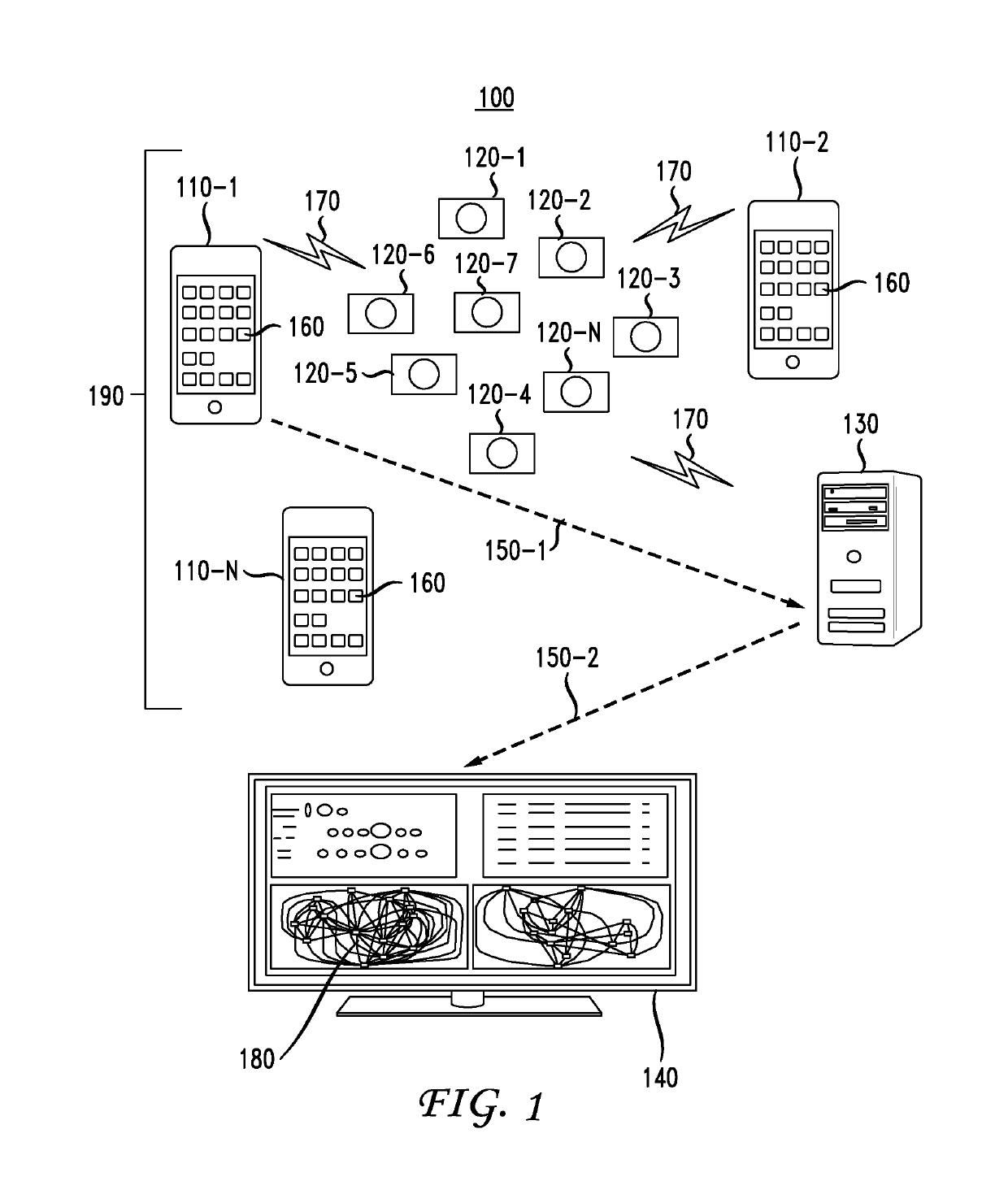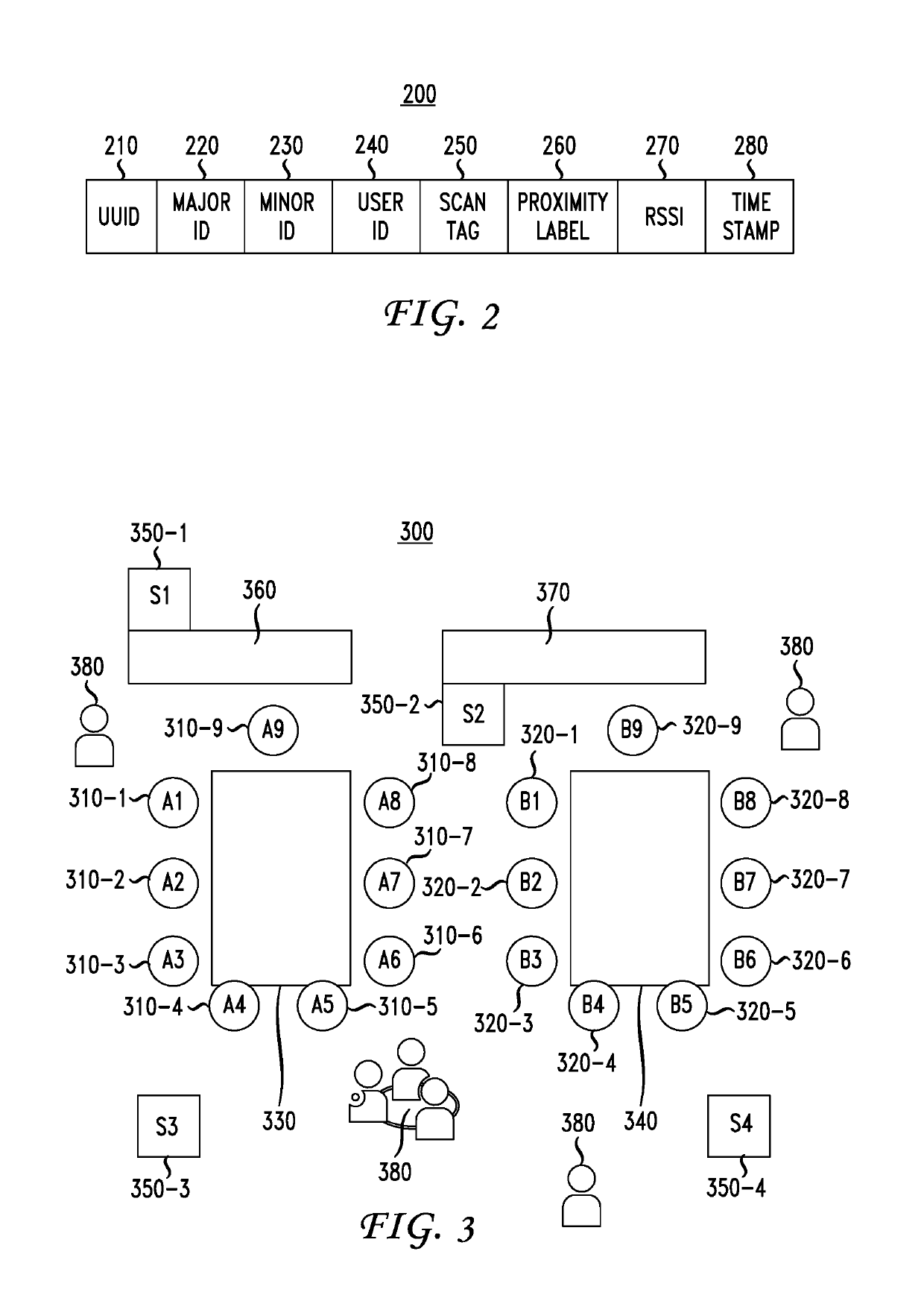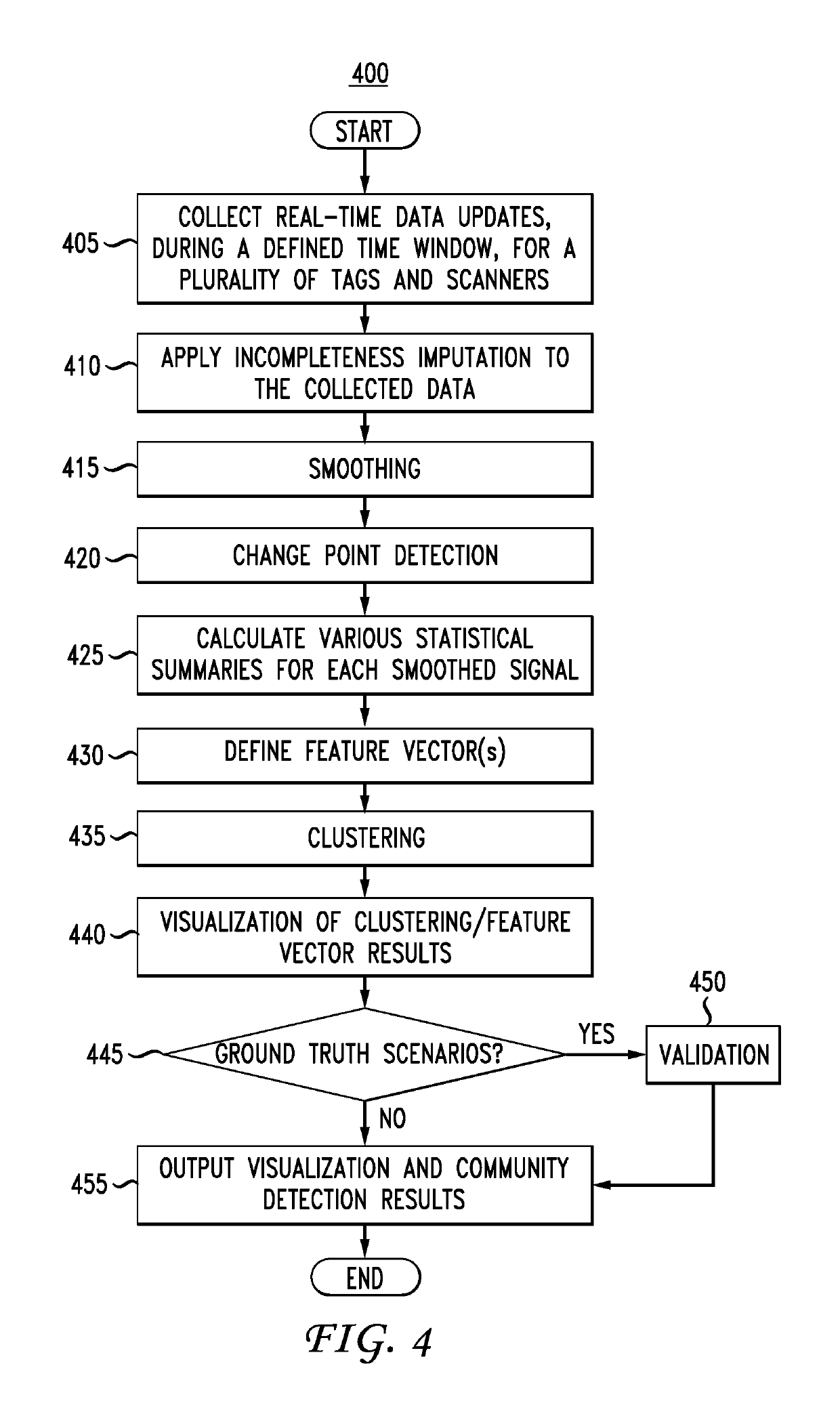Method and apparatus for data-driven face-to-face interaction detection
a face-to-face interaction and detection method technology, applied in the field of automatic community discovery, can solve the problems of increasing the automation challenge, unable to adapt to the changing environment, and the location estimation based on indoor sensor network data is highly inaccurate, so as to achieve accurate real-time linkage determination
- Summary
- Abstract
- Description
- Claims
- Application Information
AI Technical Summary
Benefits of technology
Problems solved by technology
Method used
Image
Examples
Embodiment Construction
[0006]In accordance with various embodiments, a method, apparatus and system are provided for an improved community discovery technique that enables the accurate real-time determination of linkages between groups of individuals in a data-driven manner that is insensitive to noise and / or missing / dropped signals for automatically capturing the dynamic real-time interaction between individuals.
[0007]In accordance with an embodiment, a system is provided that is configured with one or more user devices having certain signal scanning capabilities, such devices include but are not limited to mobile phones, handhelds, smartphones, tablets, or stationary devices (e.g., a Raspberry Pi). The user device is configured for monitoring and collecting RSSI sensor data from one or more tags (e.g., iBeacon devices) that are associated with respective individuals in an indoor environment (e.g., tags carried or affixed as badges or IDs) and periodically sending the collected data to a central device (...
PUM
 Login to View More
Login to View More Abstract
Description
Claims
Application Information
 Login to View More
Login to View More - R&D
- Intellectual Property
- Life Sciences
- Materials
- Tech Scout
- Unparalleled Data Quality
- Higher Quality Content
- 60% Fewer Hallucinations
Browse by: Latest US Patents, China's latest patents, Technical Efficacy Thesaurus, Application Domain, Technology Topic, Popular Technical Reports.
© 2025 PatSnap. All rights reserved.Legal|Privacy policy|Modern Slavery Act Transparency Statement|Sitemap|About US| Contact US: help@patsnap.com



